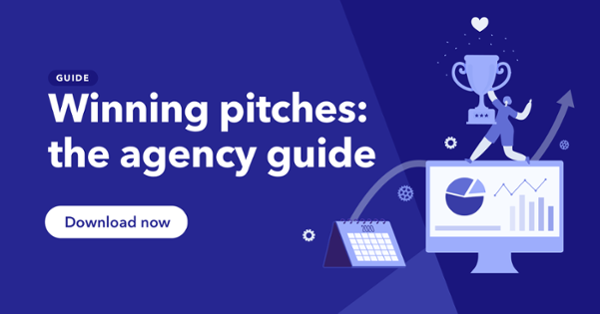We’re all getting used to changed circumstances, and it’s no wonder brands are proceeding with caution.
As the wait for a “post-COVID” world keeps stretching out, many are holding out for the confidence to push forward with long-term strategies.
| Old ways • Creative-centric • Behavioral data • Data-backed placement | New expectations • Consumer-centric • Psychographic insight • Insight-driven strategy |
But instead of spending time and effort changing this mindset, many are embracing the thing that’s taken the place of these strategies: short-term project work.
Adweek found nearly 60% of brands have cut their agency budgets and almost 40% could be on the hunt for a new agency over the next six to 12 months.
This boils down to one thing: time to adapt, stop fighting project work, and go with the flow.
Project work is an opportunity, and here’s how to make it work for you.
Embrace the low risk, high reward approach.
At the moment, trying to get a brand onboard is like being on a first date with someone who’s been hurt before. You need to show your best side and build trust before commitment can happen.
Project work is a low-risk way for brands to work with an agency before they make that bigger commitment. Knowing this, you can make it work for you.
Leaning into the smaller projects means you can show off what you can do. Once their confidence is back, they’ll remember the stellar work you’ve already done – and in the meantime you may be creating lucrative repeat business.
Prepare for anything and everything.
After all, low risk doesn’t mean no risk.
You don’t get paid for the time you spend preparing for a pitch. This means you need to have a high conversion rate to truly reap the benefits of the time you’ve put in.
This is where preparation is, as they say, key.
Use the right data and use it wisely (obviously).
Research is what helps agencies stand out from the crowd, builds confidence with brands, and lets you overachieve on expectations – leading to more opportunities.
Projects require a deeper understanding of an audience and more granular data than a lot of other work.
For that to happen, the data you use has to be accurate and timely.
To get the level of detail at the speed you need it, a combination of research can hit the spot.
Steps for developing a data-first project
- Gather relevant data on the GWI platform.
- To get even more granular or niche, carry out custom research with GWI.
- Share key data points with the creative department.
- Identify the strategic insight to work on.
- Develop the creative concept.
- Apply the right touchpoints.
- Profit.
How agencies should face 2021
Opportunities to win over brands are few and far between right now, with an agency landscape that’s more competitive than ever.
That’s where tailored, data-driven insight can be the difference between winning and losing. Here’s an example.
Imille: Linking strategy and creative to meet intricate briefs
Helping brands make the digital transition is full-service agency Imille’s number one priority. To do this, they start with consumer insight – the kind that actually makes an impact.
But recognizing the real value lay in connecting strategy and creativity, they needed to make that link stronger.
- The challenge: doing every brief justice
Like many independent agencies there’s one thing they have to get right: answering the brief.
But if a project came their way that meant going deeper into the mindsets of their target consumers, they lacked the insight to do it justice.
To do the briefs justice and bring creative and strategy closer together, they needed to answer why their target audiences were doing what they were doing.
- The action: using data to connect creativity and strategy
Using GWI, Imille could uncover surprising and useful insight into a potential target audience for their client, using a platform they weren’t targeting them on.
From this, they were able to outline in detail the ROI opportunity that existed in investing in that platform and audience.
- The result: putting revenue front and center
For Imille, having access to a wealth of data around motivations, attitudes and interests (among others) is a game-changer.
Not only does it mean they can give clients far more comprehensive and original insight, improving this link between creativity and strategy for them is all about driving business outcomes.
Pitching ideas they have a solid reason to believe will work means there’s less risk involved, which is a key consideration for brands when it comes to allocating their budget.



